Here’s How to Choose the Right Toilet
The right toilet will improve your bathroom’s form and function.
Toilets vary by type, style, size, and features. When making your decision, consider your bathroom space and your lifestyle. The right toilet will complement both.

Toilet Types: One- or Two-Pieces
Toilets come in a choice of one-piece or two-piece models. Each have advantages, depending on preference and space.


Toilets by Flush Type
Once you’ve narrowed your one- versus two-piece toilet options, consider flush type. Flushes are not created equal: Look for features that match your lifestyle and water-conservation goals.

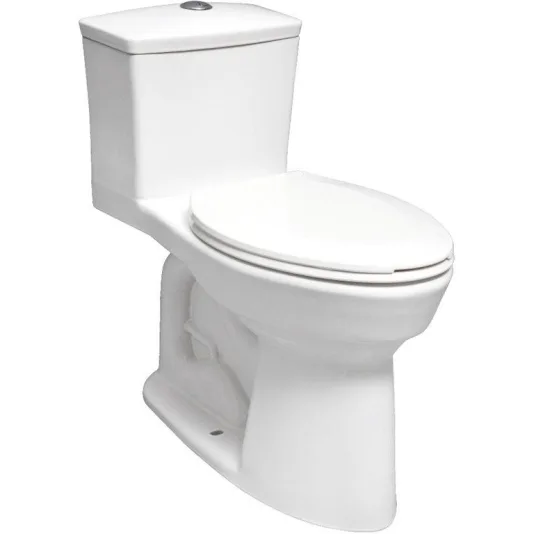

Find the Right Toilet Style and Size
Toilets also vary by height and toilet bowl shape. Consider your space and lifestyle (including the age of family members) when decision-making.
Standard vs. Comfort Height
Toilet height is measured from the floor to the top of the bowl, not including the seat. Ideally, you should be able to sit and stand with ease, and comfortably rest both feet on the floor while seated.
| Standard-height toilets are typically 14-15 inches high, making them ideal for children and users of average height. |
| Comfort-height toilets are 16 inches (or more) in height, which can make it easier for taller people, older folks, and those with leg, back, and mobility issues to sit down and get up again. |
Round vs. Elongated bowls
Toilet bowl size impacts the general dimensions of a toilet as well as its toilet seat style.
Tip: The more common a toilet bowl shape is, the easier it will be to find a replacement seat.
| Round bowls take up less space, making them popular for smaller bathrooms. Average dimension: 16.5 inches from seat bolt hole to bowl front |
| Elongated bowls offer more thigh support and comfort, as they are about two inches longer. Average dimension: 18.5 inches from seat bolt hole to bowl front |
| Compact elongated bowls feature an elongated toilet bowl but take up the same space as a round bowl. Average dimension: Varies by model |
Bathroom Toilet Features
Once you’ve narrowed your toilet selection down between one- versus two-piece types, flush type, and size, consider those features that make sense for your bathroom design and lifestyle.
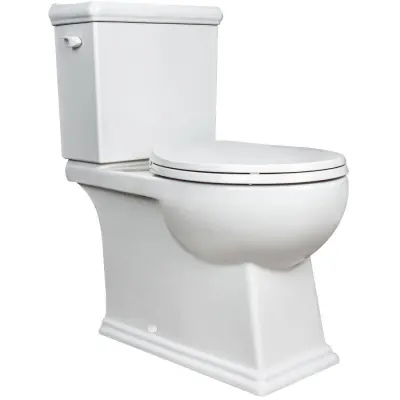


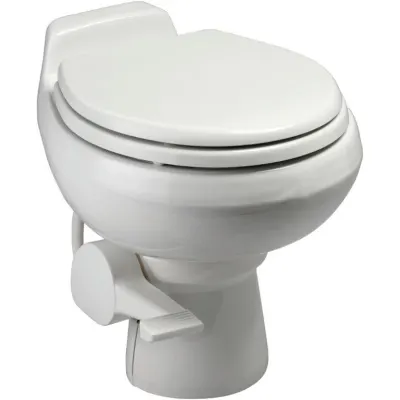
Buying a Toilet Seat
While toilets are usually sold with a matching seat, you may be in the market for a new seat if you want to customize your purchase or if you’re updating an existing toilet.
Toilet Seat Materials
Generally, toilet seats come in either plastic, wood, or polypropylene.
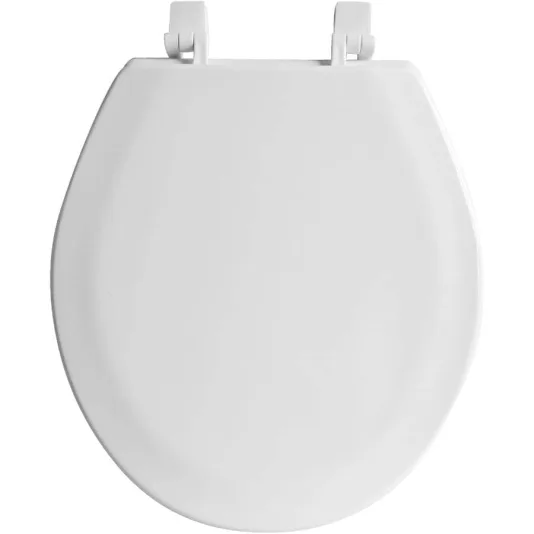
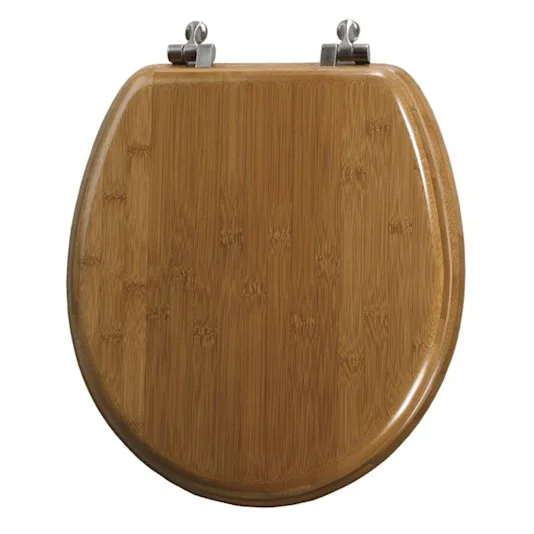
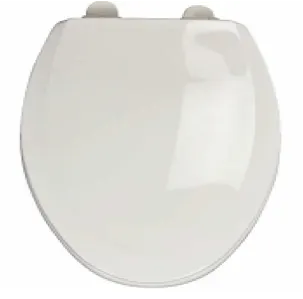
Toilet Seat Features to Consider
These product features may improve function in various settings.
Open front seats
Open front seats (also known as “split seats”) are designed to reduce soiling and prevent contact with spills.
Soft Close
These lids close slowly and quietly without slamming (great if you have kids).
Quick-release hinge
Look for this feature for easy removal and thorough cleaning.
Adjustable-heat seat
Cozy in winter – especially in a cottage or cabin!
Built-in bidet
Luxurious and practical, but may require electrical and water hook-ups.
Built-in potty seat
This perk pays off for large families with young children.
Installation Tips & Tricks
Ensure your toilet fits your space by determining the rough-in measurement. This is the distance between the floor drain and the wall.
While the most common rough-in is 12 inches, some houses may have 10 and 14 inch rough-ins. Determine the rough-in by measuring from the wall behind the toilet to the middle of the bolts on the base.
Toilets are heavy, so use caution when lifting. Ask for help if you need it!
If in doubt, hire a pro.